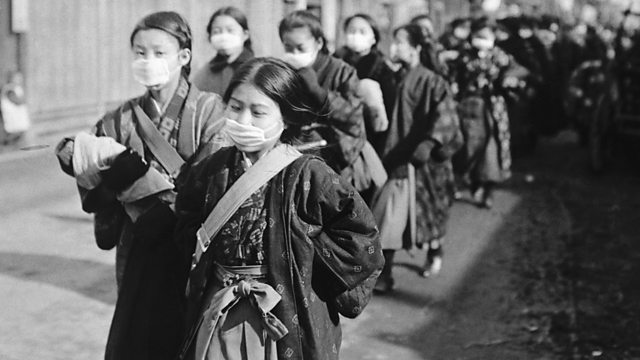The 1918 Spanish Flu: The mother of all pandemics
In 1918 a flu virus infected one third of the world. Drugs were useless, there was no vaccine, and social distancing was the only real weapon. What are the lessons for today?
A century ago a deadly flu virus swept the planet, uniting the world in a disaster on a par with World War One. Over 50 million people died. Social distancing was put in place but drugs were ineffective, there was no vaccine, and in many places medicine could not cope. The world recovered but was never the same again.
What can the last great pandemic teach us about how to combat Covid-19 today?
Three world experts join Bridget Kendall: Laura Spinney, science journalist and author of Pale Rider: The Spanish Flu of 1918 and How it Changed the World;. Svenn Erik Mamelund, historical demographer and research professor at Oslo Metropolitan University; Siddharth Chandra, director of the Asian Studies Centre and professor at James Madison College, Michigan State University.
(Photo: Japanese school girls wear protective masks to guard against the influenza outbreak. Credit: Bettmann/Getty Images)
Last on
Broadcasts
- Thu 30 Apr 2020 09:06GMT大象传媒 World Service
- Thu 30 Apr 2020 23:06GMT大象传媒 World Service
- Sun 3 May 2020 13:06GMT大象传媒 World Service East and Southern Africa & West and Central Africa only
- Sun 3 May 2020 14:06GMT大象传媒 World Service except Americas and the Caribbean, East and Southern Africa, South Asia & West and Central Africa
- Mon 4 May 2020 03:06GMT大象传媒 World Service
Featured in...
![]()
Health, medicine and the body—The Forum
The people and discoveries that changed how we deal with our physical health
Podcast
-
![]()
The Forum
The programme that explains the present by exploring the past



